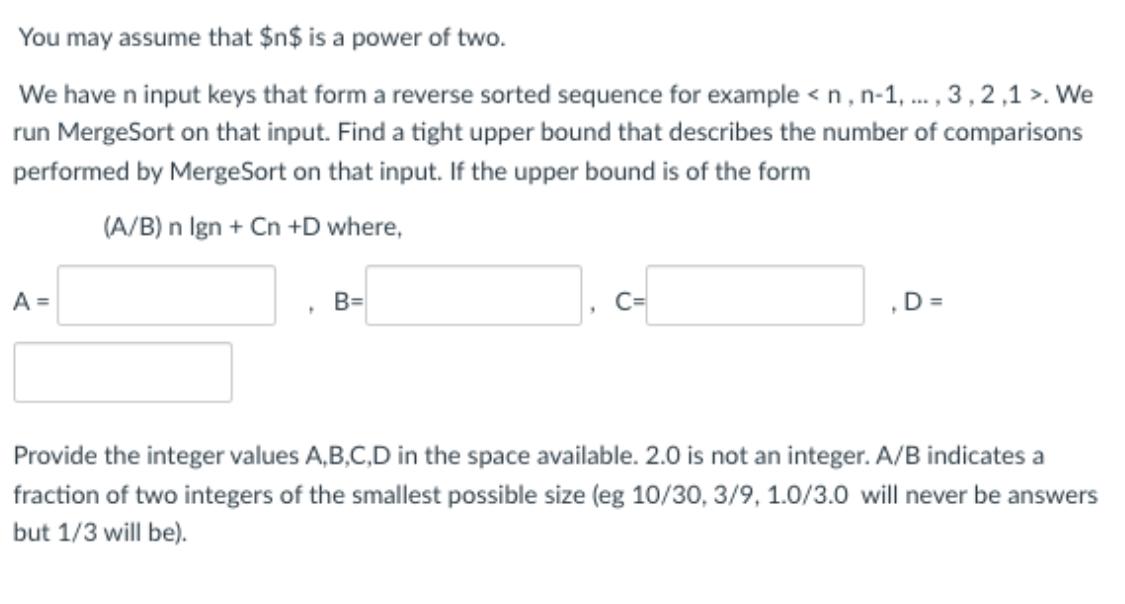Answered step by step
Verified Expert Solution
Question
1 Approved Answer
You may assume that $n$ is a power of two. We have n input keys that form a reverse sorted sequence for example .

You may assume that $n$ is a power of two. We have n input keys that form a reverse sorted sequence for example . We run MergeSort on that input. Find a tight upper bound that describes the number of comparisons performed by MergeSort on that input. If the upper bound is of the form (A/B) n Ign + Cn +D where, A = B= D= Provide the integer values A,B,C,D in the space available. 2.0 is not an integer. A/B indicates a fraction of two integers of the smallest possible size (eg 10/30, 3/9, 1.0/3.0 will never be answers but 1/3 will be).
Step by Step Solution
★★★★★
3.50 Rating (160 Votes )
There are 3 Steps involved in it
Step: 1
Answer When MergeSort is applied to a reverse sorted sequence of size n it performs a total of nlog2 n comparisons Lets break down the components of t...
Get Instant Access to Expert-Tailored Solutions
See step-by-step solutions with expert insights and AI powered tools for academic success
Step: 2

Step: 3

Ace Your Homework with AI
Get the answers you need in no time with our AI-driven, step-by-step assistance
Get Started


